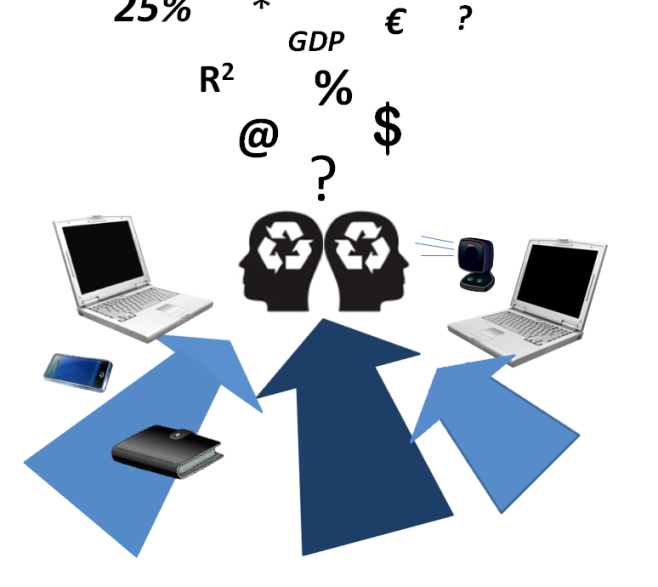By Clare Flynn Levy of Essentia Analytics
It’s no secret that professional investors often struggle to apply the theoretical lessons of behavioral finance to their everyday activity. That’s why I founded Essentia Analytics. Our service helps active investors apply behavioral science to their own decision-making and generate measurable alpha gains, as a result.
Here are five easy takeaways from Essentia’s work with portfolio managers that you can apply right now to your investment decision-making.
All of them have been linked to improved investment skill and are designed to encourage a more self-aware and scientific approach to the way you make portfolio decisions.
Taken individually or as a whole, they are the first steps to building a data-driven feedback loop – one that will help you to get a better understanding of where, and how, you make your best decisions, and where you consistently go wrong.
This kind of feedback analysis is already widely used by professional athletes and military personnel as a tool for improving performance. Its acceptance within asset management is now growing rapidly as powerful analytics become cheaper and more readily available, and as active management responds to growing competitive threats.

1. The Daily 10 Minute Review
At the end of each day, set aside 10 minutes to reflect on the decisions you’ve made and how you’ve made them.
Use an investment journal, whether it’s on paper or online, to structure your thoughts. The most important thing is that you are honest and frank with yourself about what’s going on in your head, whether that’s about specific investments or how you feel you performed that day.
This kind of private review will help you become aware of the professional and personal conditions under which you do your best work. It will also strengthen your self-control so you can check yourself from acting in those scenarios typically linked to poor decision-making.
2. The Entry/Exit Checklist
Pick five questions to ask yourself every time you open a position, and five questions for every time you close one.
Behavioral finance has revealed that intuition and conviction – so often thought of as an investor’s friends – can be your enemies at times. So to ensure you stay disciplined, it’s worth creating a checklist to review whenever putting on a trade.
Some of the most popular questions our clients ask include:
What type of decision is this?
What is my target price?
What is my target holding period?
How will I know I am right?
How will I know I am wrong?
This quick pre-trade process will help ensure that whenever you enter or exit a position, you’re doing so deliberately and not in response to impulse or unconscious bias.
3. The Scheduled Position Post-Mortem
A week after you’ve exited a position, set aside 10 minutes to review the true story. Were you right for the right reasons, or just lucky? How well did you follow your process?
Given the constant flow of new information, professional investors are almost always looking forward, not backwards. That makes it very difficult learn from what went right or wrong in the past, and therefore to continuously improve.
By leaving it a week after you’ve exited, you’ll be less emotional in your assessment. Not only will it help you understand the patterns that underlay your best and worst decisions, but it will help develop your learning, giving you more control.
4. The Clean Sheet of Paper
Once a week, go through all of your positions and ask yourself “Would I be a buyer today?”.
If you wouldn’t, then consider getting out of the position and setting a reminder to revisit it later (or at a different price).
Holding on to a position just because it’s already in the portfolio is an example of the Endowment Effect (over-valuing something because you already own it). The world’s best investors have regular mechanisms for re-visiting their positions as objectively as possible and they aren’t afraid to cut and buy back where it’s warranted.
5. Don’t try and remember too much
Manage your cognitive load more effectively by reducing the number of things you need to remember during your working day.
A lot has been written about the inverse link between cognitive load and decision-making performance.
By cutting back on what you try to hold in your short-term memory, you’ll free-up some valuable mental bandwidth. As a result, you’ll be better able to make more conscious judgement calls when required, rather than slipping into unconscious mechanisms and responses.
To achieve this, consider the humble but effective To-Do List. The trick is to make sure it’s always to-hand and that you keep the list items specific and actionable – that way you won’t have to rethink each item when you review it.
A new era of intelligent computing means that technology is also getting better at helping us eliminate the grunt work and focus on the part of the process that humans do best: decision-making. A big part of how we add value at Essentia is through automated “nudges” that point out when you need to make a deliberate decision. What the decision is remains your call – the technology serves to empower the human investor, not replace you.
Find out how Essentia applies behavioral science to the active investment process: Our latest case study shows how one institutional portfolio manager used Essentia’s feedback loop and proactive nudges to uncover 53bp of additional alpha in just 7 months. contact:info@essentia-analytics.com
related articles:
